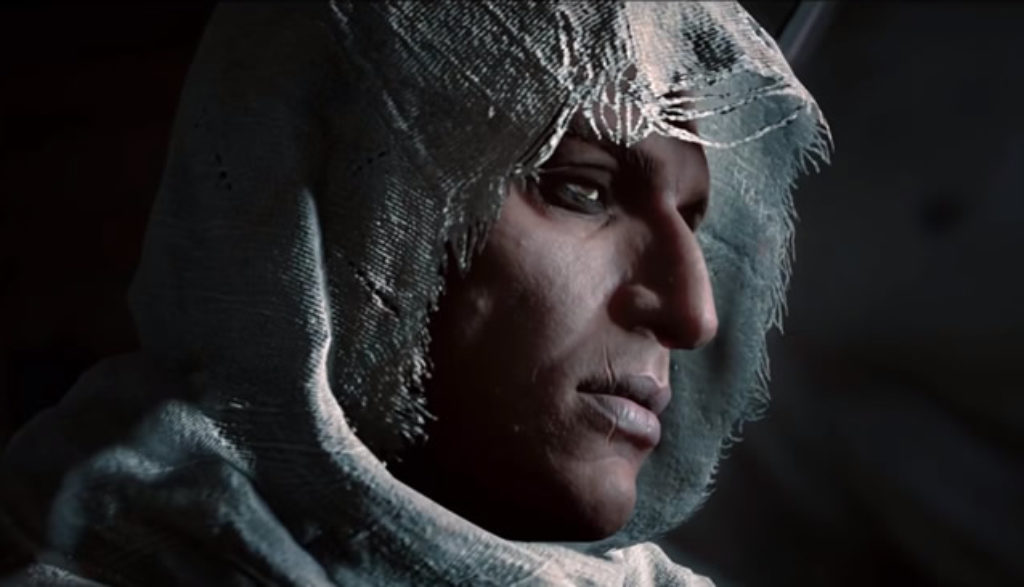
For the last 10 years, Assassin’s Creed titles have encouraged gamers to anticipate each new jump-into-the-past-and-kill-people-in-stealthy-ways adventure. And though the initial sci-fi link between DNA-tapping tech, mystical Knights Templar and an extinction-level threat to humanity concluded long ago, this ubër-popular franchise keeps creeping back with blade in hand anyway.
To keep stretching the series’ narrative, the gang at Ubisoft has crafted story ties connecting everything from Italian aristocrats and high-seas pirates to Mohawk Indians and American colonials. And with Assassin’s Creed Origins, Ubisoft has taken the franchise’s knife-to-the-throat action waaaay back to ancient Egypt in 49 BC.
For those in the Assassin’s Creed know, let me start by answering the obvious first question: No, there are no warring battles between Knights Templar and assassins this go ’round. This is more of a prequel-sequel origin story as the title suggests.
There’s a bit of a modern-day narrative mixed into the gaming cocktail here. But this is primarily a tale of the distant past. Players slip into the dusty sandals of a man named Bayek, a guy who’s sort of an Egyptian policeman and servant to the Pharaoh.
Bayek’s life is turned upside down one day when he and his son, Khemu, get kidnapped. Masked men ultimately kill Khemu while trying to access a secret vault. And in their grief and anger, Bayek and his wife, Aya, become mercenaries—devoting themselves to tracking down and exacting their revenge upon a mysterious order that predates the Knights Templar.
As they grind through their vengeful business, this capable pair crosses paths with notable historical figures such as Cleopatra and Julius Caesar. Alliances are forged and broken as the couple tries to maintain focus on avenging their son’s death. But they also see how their conflict plays into much larger machinations, blurring the lines between friends and foes.
Gameplay-wise, this title’s pyramid-and-golden-desert setting changes things up quite a bit from past Assassin offerings. Quests no longer focus on leaping across one rooftop or dark alleyway to another in a claustrophobic city, so there’s a lot less stealthy sneaking to be done. And in some cases, enemy characters are actually too strong to be taken out with a single stealthy attack anyway.
The combat mechanics have also been given a rejuvenating reboot. There are more technical, RPG-like attack and block moves to access this time. That actually makes character battles more realistic—for better and for worse.
In addition, combat can be much more difficult and confusing in a crowd of swinging swords and clubs. And the new system gives players the option of targeting and hacking specific body parts, which results in profusely spurting wounds.
As always, the goopy violence of this new Assassin’s game piles up quickly. In button-crunching battles and cutscenes, limbs get severed, a man is decapitated, someone’s body is impaled, heads are crushed, another person gets stabbed in the face. And the bloody litany stretches on from there, including burnings, slashed throats and ritual sacrifices—among other gruesome fates.
Foul language—including f-words and s-words, as well as other profanities—can be heard regularly. And sexuality plays a part, too. Topless women can be spotted in both carved marble and digital flesh forms. Paintings in a brothel depict naked men and women engaging in sex. We see a straddling sexual interaction played out between onscreen characters. And people talk of orgies, same-sex pairings and the joys of ogling naked boys.
As if that undesirable content list wasn’t long enough already, it’s extended further by a big dose of ancient Egyptian spirituality. The storyline here enfolds myriad gods, and cultic religious rituals are central to the game’s main story and side quests. No one expects this game to convert players to believing in ancient Egyptian mythology, of course. But the spiritual atmosphere surrounding these rituals is often dark and even demonic in tone.
Finally, as mentioned, bloody revenge is front and center throughout this violent narrative. Seeking vengeance is not merely condoned, but celebrated in a game that once again embraces this franchise’s perpetual penchant for graphic, explicit storytelling and gameplay.